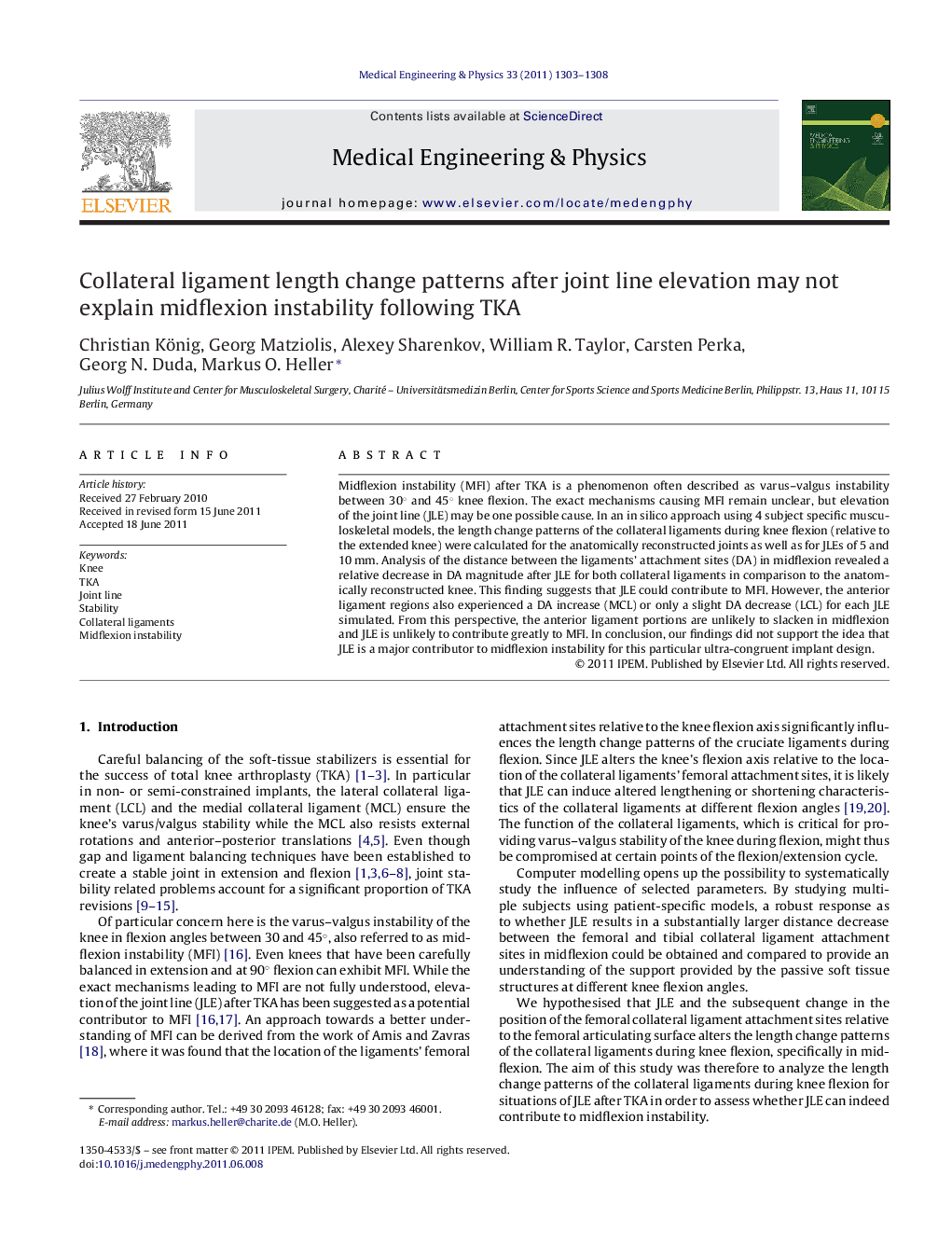| کد مقاله | کد نشریه | سال انتشار | مقاله انگلیسی | نسخه تمام متن |
|---|---|---|---|---|
| 876646 | 910855 | 2011 | 6 صفحه PDF | دانلود رایگان |

Midflexion instability (MFI) after TKA is a phenomenon often described as varus–valgus instability between 30° and 45° knee flexion. The exact mechanisms causing MFI remain unclear, but elevation of the joint line (JLE) may be one possible cause. In an in silico approach using 4 subject specific musculoskeletal models, the length change patterns of the collateral ligaments during knee flexion (relative to the extended knee) were calculated for the anatomically reconstructed joints as well as for JLEs of 5 and 10 mm. Analysis of the distance between the ligaments’ attachment sites (DA) in midflexion revealed a relative decrease in DA magnitude after JLE for both collateral ligaments in comparison to the anatomically reconstructed knee. This finding suggests that JLE could contribute to MFI. However, the anterior ligament regions also experienced a DA increase (MCL) or only a slight DA decrease (LCL) for each JLE simulated. From this perspective, the anterior ligament portions are unlikely to slacken in midflexion and JLE is unlikely to contribute greatly to MFI. In conclusion, our findings did not support the idea that JLE is a major contributor to midflexion instability for this particular ultra-congruent implant design.
Journal: Medical Engineering & Physics - Volume 33, Issue 10, December 2011, Pages 1303–1308